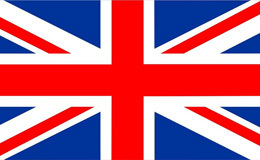See more categories+
09
2025
-
08
Understanding the Functionality and Advantages of 3 Phase 4 Wire Energy Meters
In the realm of electrical instrumentation, the 3 Phase 4 Wire Energy Meter serves a critical role in measuring electrical energy consumption in three-phase electrical systems. These meters are primarily designed to accurately monitor the energy usage of industrial and commercial applications where large amounts of power are utilized. Understanding the operational fundamentals and advantages of 3
Author:
In the realm of electrical instrumentation, the 3 Phase 4 Wire Energy Meter serves a critical role in measuring electrical energy consumption in three-phase electrical systems. These meters are primarily designed to accurately monitor the energy usage of industrial and commercial applications where large amounts of power are utilized. Understanding the operational fundamentals and advantages of 3 Phase 4 Wire Energy Meters can greatly enhance efficiency and energy management in various settings.
A 3 Phase 4 Wire Energy Meter operates by measuring the total energy consumed through its four wires: three for the phases (L1, L2, L3) and one neutral wire (N). Each phase wire carries alternating current (AC), while the neutral wire serves as a return path for unbalanced load currents. This configuration is particularly advantageous for balancing loads in commercial environments, where electricity is distributed across multiple phases.
One of the key benefits of a 3 Phase 4 Wire Energy Meter is its ability to provide accurate readings of both active and reactive power, along with energy consumption metrics. This dual measurement capability is crucial for industrial applications that require precise energy management to optimize operational efficiency. By analyzing both active and reactive power, professionals can make informed decisions about energy usage, leading to potential cost savings and enhanced performance.
Moreover, these energy meters are equipped with advanced features such as real-time monitoring, communication capabilities, and data logging functions. These characteristics enable users to track energy consumption patterns over time, facilitating better forecasting and energy planning. The integration of communication protocols allows for remote access to data, making it easier to manage energy resources and identify areas where energy efficiency can be improved.
In addition to their measurement capabilities, 3 Phase 4 Wire Energy Meters contribute to safety and reliability in electrical systems. By monitoring electrical parameters continuously, these meters can detect anomalies or irregularities that may indicate faults or imbalances in the system. This proactive approach to monitoring helps prevent potential failures, ensuring the stability of electrical networks.
In conclusion, the 3 Phase 4 Wire Energy Meter stands out as an indispensable tool for professionals in the electrical industry. Its capacity to measure energy consumption accurately, combined with advanced features for data analysis and monitoring, makes it a vital asset for efficient energy management. By leveraging these meters, businesses can enhance their operational efficiency and contribute to more sustainable energy practices. Understanding and utilizing the capabilities of a 3 Phase 4 Wire Energy Meter can significantly impact energy management strategies, ultimately driving improved performance in various applications.
A 3 Phase 4 Wire Energy Meter operates by measuring the total energy consumed through its four wires: three for the phases (L1, L2, L3) and one neutral wire (N). Each phase wire carries alternating current (AC), while the neutral wire serves as a return path for unbalanced load currents. This configuration is particularly advantageous for balancing loads in commercial environments, where electricity is distributed across multiple phases.
One of the key benefits of a 3 Phase 4 Wire Energy Meter is its ability to provide accurate readings of both active and reactive power, along with energy consumption metrics. This dual measurement capability is crucial for industrial applications that require precise energy management to optimize operational efficiency. By analyzing both active and reactive power, professionals can make informed decisions about energy usage, leading to potential cost savings and enhanced performance.
Moreover, these energy meters are equipped with advanced features such as real-time monitoring, communication capabilities, and data logging functions. These characteristics enable users to track energy consumption patterns over time, facilitating better forecasting and energy planning. The integration of communication protocols allows for remote access to data, making it easier to manage energy resources and identify areas where energy efficiency can be improved.
In addition to their measurement capabilities, 3 Phase 4 Wire Energy Meters contribute to safety and reliability in electrical systems. By monitoring electrical parameters continuously, these meters can detect anomalies or irregularities that may indicate faults or imbalances in the system. This proactive approach to monitoring helps prevent potential failures, ensuring the stability of electrical networks.
In conclusion, the 3 Phase 4 Wire Energy Meter stands out as an indispensable tool for professionals in the electrical industry. Its capacity to measure energy consumption accurately, combined with advanced features for data analysis and monitoring, makes it a vital asset for efficient energy management. By leveraging these meters, businesses can enhance their operational efficiency and contribute to more sustainable energy practices. Understanding and utilizing the capabilities of a 3 Phase 4 Wire Energy Meter can significantly impact energy management strategies, ultimately driving improved performance in various applications.
Key words:
Related news


![[object Object] [object Object]](https://omo-oss-image.thefastimg.com/portal-saas/new2023080419495759710/cms/image/138ba837-b50d-4ff3-a73c-2e6a2379c522.jpg)







